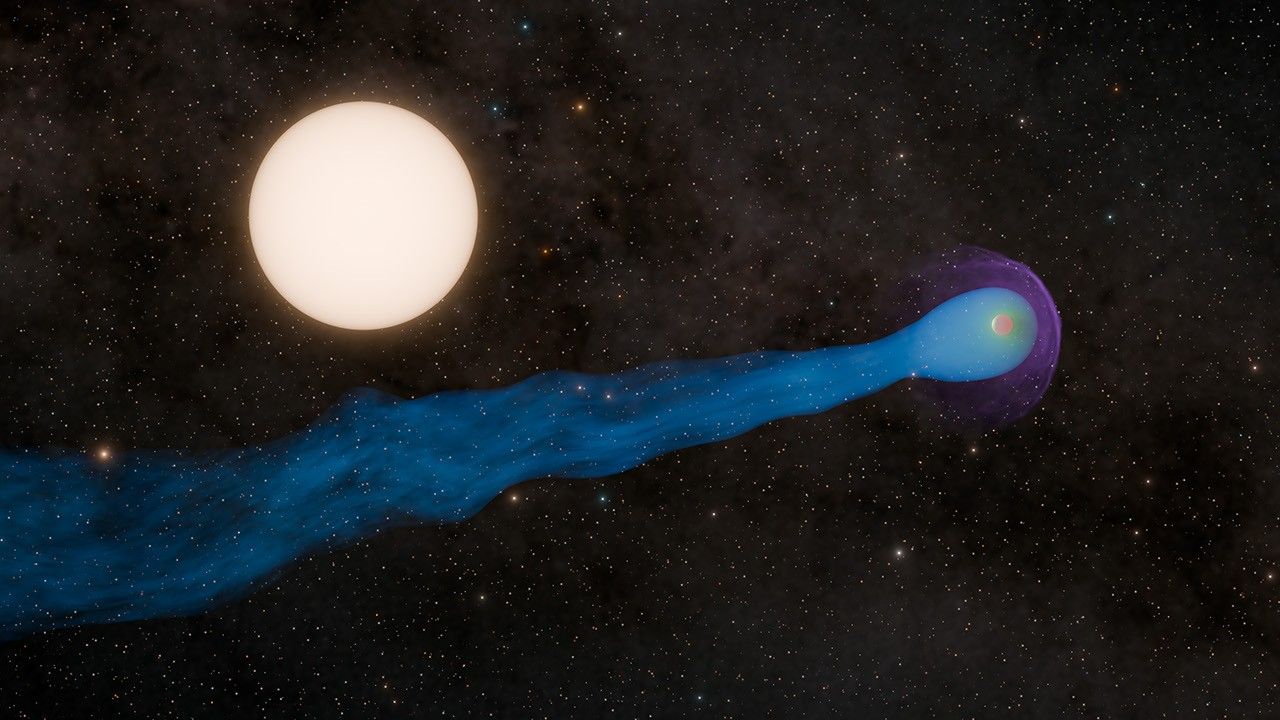On April 19, 1971, the Soviet Union placed into orbit Salyut, the world’s first space station. Designed for a 6-month on orbit operational lifetime, Salyut hosted the crew of Georgi T. Dobrovolski, Vladislav N. Volkov, and Viktor I. Patsayev for a then record-setting 24-day mission. The flight ended tragically when the crew died due to the sudden depressurization of their Soyuz 11 spacecraft shortly before reentry into the Earth’s atmosphere. Over the succeeding decades, Soviet, and later Russian, engineers continually improved on the original Salyut design, launching ever more capable generations of space stations in the Salyut series and the Mir station’s Base Block. The Zvezda Service Module of the International Space Station’s Russian segment traces its heritage back to the world’s first space station of 50 years ago.


Left: Illustration of the military Almaz experimental space station. Credit: Image courtesy of Anatoly Zak. Right: Illustration of the Salyut space station with a Soyuz crew transport spacecraft approaching at upper left. Credit: Image courtesy of RIA-Novosti.
The Soviet Union began development of a secret military space station project called Almaz in 1966 with the first launch planned for the early 1970s. As envisioned, Almaz consisted of a 20-ton module periodically visited by crews of 2 to 3 cosmonauts using Soyuz crew transport spacecraft. As a response to the successful Apollo 11 lunar landing in July 1969, the Soviet government decided to develop the world’s first civilian Earth orbital space station. In February 1970, they approved a crash program to use an Almaz shell and add Soyuz components such as orbital maneuvering engines and solar arrays to prepare a space station for launch in less than 18 months, or about two years sooner than the more complex Almaz would be ready to fly. Work began that same month on two flight units at the facility now known as RKK Energia in Kaliningrad, now Korolev, outside of Moscow. Once in orbit, the 66-foot-long space station weighed 40,620 pounds and provided 3,500 cubic feet of habitable volume. This is roughly the size of a larger in-ground swimming pool. Soviet engineers outfitted the station with 2,600 pounds of scientific equipment – including experiments to study human adaptation to long-duration spaceflight, a variety of telescopes for solar and astronomical observations, and instruments to observe the Earth. To counteract the effects of long-duration weightlessness, crews used a treadmill and elastic bands to maintain muscle tone and wore special garments called Penguin suits with sewn-in elastic bands that provided a constant load on major muscle groups. A device called Veter, later renamed Chibis, used lower body negative pressure to stress the crew members’ cardiovascular systems. A large refrigerator and a food warmer enabled crews to have a larger selection of menu items than on previous spacecraft. Soviet engineers designed a new probe and drogue docking system with a pressurized tunnel that allowed cosmonauts to internally transfer between the Soyuz spacecraft and the space station. Soviet officials originally named the station Zarya, meaning dawn in Russian, to symbolize the beginning of a new era in human spaceflight.
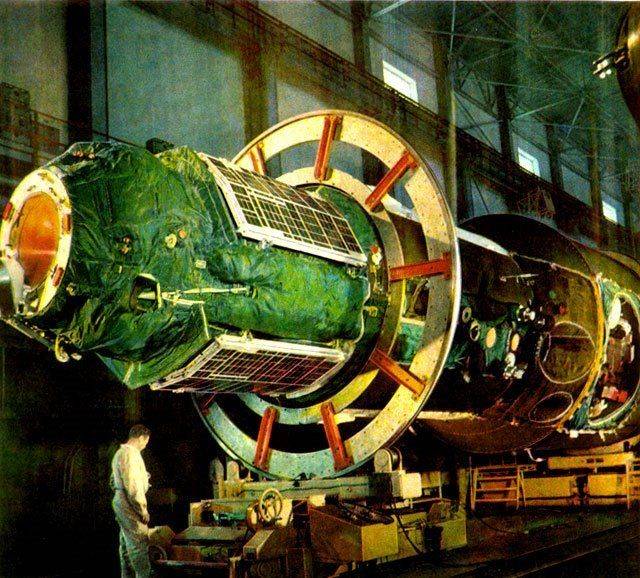
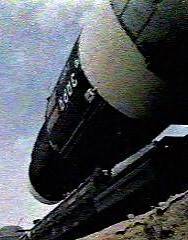

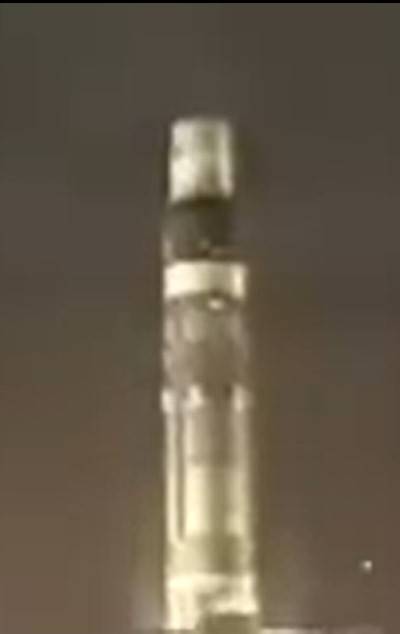
Left: The Salyut space station in the assembly and checkout building at the Baikonur Cosmodrome in Kazakhstan; for launch, a cover protected the scientific instruments in the aperture in the module’s large compartment at right. Middle left: The Salyut space station, with the name Zarya painted on its side, rolls out to the launch pad. Middle right: At Site 81, ground crews raised the Proton rocket carrying the Salyut space station to a vertical position on the launch pad. Right: Liftoff of the Salyut space station. Credit: Images courtesy of RKK Energia.
The module arrived at the Baikonur Cosmodrome in Kazakhstan in February 1971 for final testing and outfitting prior to launch. During a preflight readiness review 10 days before liftoff, managers renamed the space station from Zarya to Salyut. Two reasons prompted this action. First, the Soviet government learned that the People’s Republic of China was developing a spacecraft with the same name and wanted to avoid any conflict. Second, the Soviet Flight Control Center used Zarya as its radio call sign, and managers wanted to prevent any possible confusion during communications sessions. But ground crews had already painted the name Zarya on the side of the module and it was too late to repaint it. The launch of Salyut took place on April 19, 1971, from Pad 81 at Baikonur atop a Proton rocket. Nine minutes later, Salyut reached orbit and began deploying its solar arrays and antennas. Unfortunately, the protective cover for the main scientific apparatus failed to jettison, curtailing many of the planned Earth observation studies.

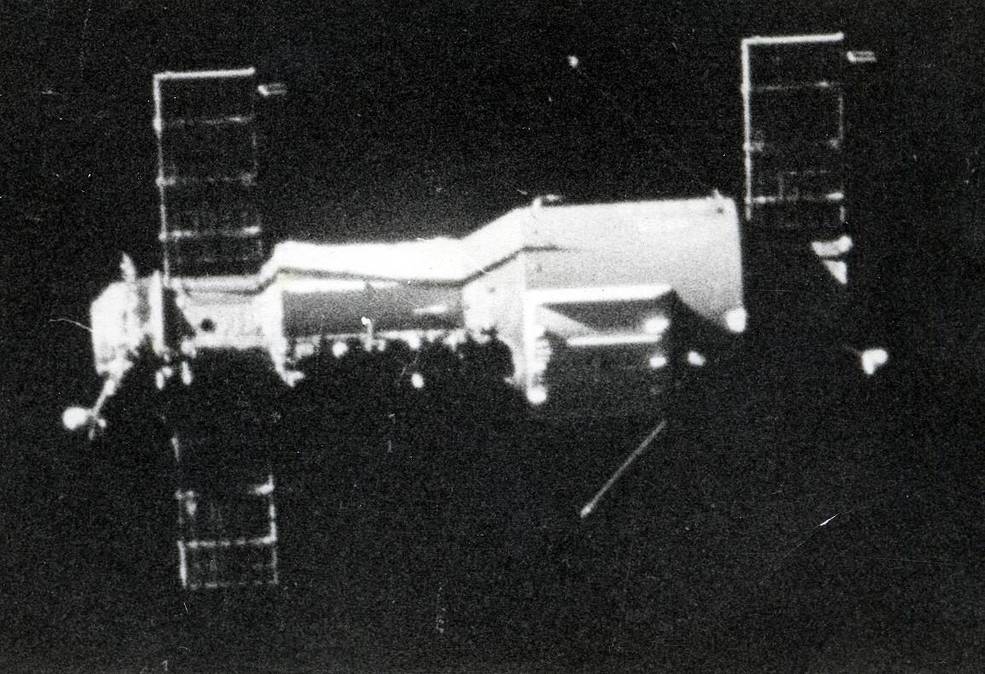
Left: The Soyuz 10 crew of Aleksei S. Yeliseyev, left, Vladimir A. Shatalov, and Nikolai N. Rukavishnikov in the spacecraft simulator. Right: View of Salyut from the departing Soyuz 10 crew. Credit: Images courtesy of RKK Energia.
On April 23, Soyuz 10 lifted off from Launch Pad 1 at Baikonur, the same pad used by Yuri A. Gagarin, the first human in space, 10 years earlier. Soyuz 10 carried veteran cosmonauts Vladimir A. Shatalov and Aleksei S. Yeliseyev and space rookie Nikolai N. Rukavishnikov for a planned month-long stay aboard Salyut. The next day, Shatalov guided Soyuz 10 to a docking with the larger space station but the spacecraft could not achieve a hard docking and the crew could not transfer into the new station. With limited supplies aboard their spacecraft, the disappointed cosmonauts departed the station after 5.5 hours. They returned to Earth the next day, making a safe but rare night landing in Kazakhstan.



Left: The Soyuz 11 crew of Georgi T. Dobrovolski, left, Viktor I. Patsayev, and Vladislav N. Volkov in the Soyuz simulator. Middle: Aboard Salyut, Volkov, left, takes a fingerstick blood sample from Dobrovolski. Right: The Soyuz 11 capsule after landing in Kazakhstan. Credit: Images courtesy of RKK Energia.
Immediately after the Soyuz 10 mission, Soviet engineers redesigned the docking probe and updated procedures for the docking to prevent a recurrence of the problem that prevented the first crew from boarding Salyut. On June 6, Dobrovolski, Volkov (the only member of the crew with previous spaceflight experience), and Patsayev launched aboard Soyuz 11 and successfully docked with, and transferred into, Salyut, establishing the world’s first space station. During the record-setting 24-day mission, Patsayev turned 38, the first person to celebrate a birthday in space. The crew carried out a series of experiments in astrophysics, biology, Earth observations, and technology, and served as test subjects to study the effects of long-term weightlessness on the human body. The mission ended tragically, when during their return to Earth, the cosmonauts died as a result of the sudden depressurization of their spacecraft. With further flights to Salyut cancelled while engineers redesigned the Soyuz spacecraft, controllers commanded the station into a destructive reentry over the Pacific Ocean on Oct. 11, 1971, after 175 days in space.
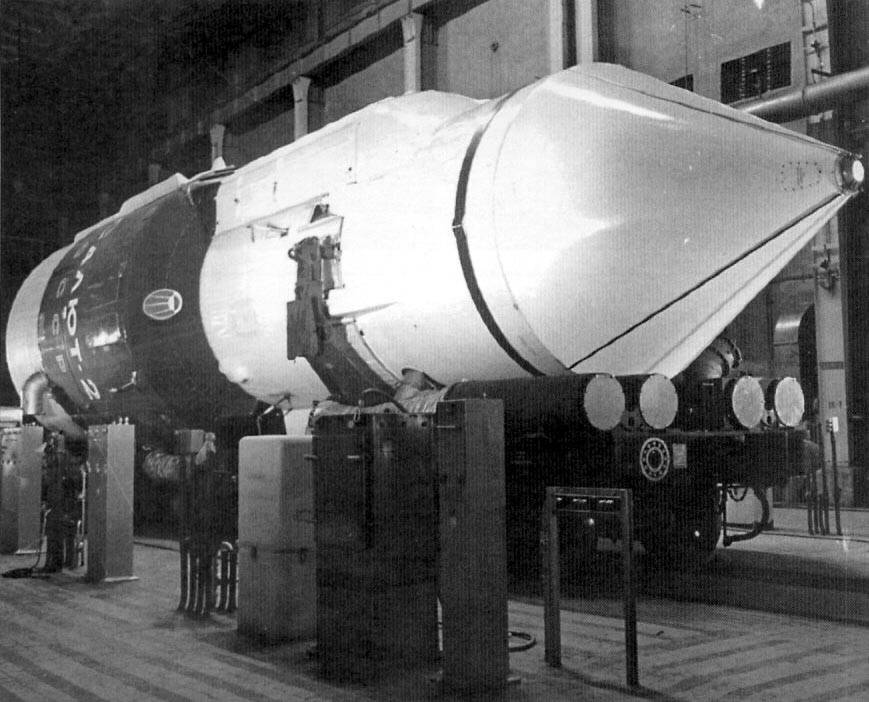

Left: The second Salyut space station, shown with its launch shroud attached in the assembly building at the Baikonur Cosmodrome in Kazakhstan, was lost in a launch failure. Right: Aleksei A. Leonov, left, and Valeri N. Kubasov, the first crew assigned to the second Salyut space station wearing the new Sokol launch and entry suits. Credit: Images courtesy of RKK Energia.
To prevent a recurrence of the Soyuz 11 tragedy, Soviet engineers redesigned the Soyuz spacecraft and mandated that cosmonauts wear Sokol pressure suits during launch and landing, a requirement still in place today. After verifying the redesigned Soyuz during a six-day uncrewed test flight in June 1972, the Soviets attempted to launch a second Salyut, the twin of the first space station, the following month. A failure of one of its Proton rocket’s second stage engines prevented what would have been Salyut-2 from reaching orbit. Its planned first occupants, Aleksei A. Leonov and Valeri N. Kubasov, had to await another opportunity to fly in space.





Salyut’s legacy is evident in subsequent space station elements, including Salyut 4 (1974-5), left, Salyut 6 (1977-1982), Salyut 7 (1982-1991), the Mir Base Block module (1986-2001), and the Zvezda Service Module (launched in 2000 and still part of the International Space Station). Credit: Images courtesy of RKK Energia.
Undeterred, Soviet engineers were already working on the next version of the Salyut space station. To overcome the first station’s limited power generating capabilities, the new generation included three larger steerable solar panels mounted on the midsection and designed to track the sun without the need to rotate the entire station. The Soviets launched the first of these second-generation stations on May 11, 1973, just three days before America’s Skylab. Unfortunately, a series of errors led to one its attitude control thrusters to fire continuously, depleting the station’s fuel supply during its first orbit. Unable to control the station or to raise its altitude, the Soviets designated it Kosmos 557 to hide its true identity. The derelict station reentered the Earth’s atmosphere 11 days after launch. Leonov and Kubasov, the crew designated as this new station’s first visitors, were reassigned as the Soviet crew for the Apollo-Soyuz Test Project. The Soviets’ string of bad luck ended with the launch of the second of the new generation stations, Salyut 4, in December 1974. Two crews spent 30 and 63 days aboard the station in 1975, setting new Soviet space endurance records and conducting valuable science experiments. The next two third-generation stations, Salyut 6 and 7, launched in 1977 and 1982, respectively, featured a second docking port that enabled them to be resupplied by uncrewed Progress cargo vehicles. This gave the stations much longer lives over their predecessors and enabled the Soviets to extend human spaceflight durations to eight months. The fourth-generation module, featuring six docking ports, flew as the Base Block of the Mir space station complex that, over its 15-year life, hosted 104 visitors from 13 countries, including seven American astronauts as part of the Shuttle-Mir Program, and extended the human spaceflight duration record to 14 months. The backup module for the Mir Base Block became incorporated into the International Space Station (ISS) as the Russian Segment’s Zvezda Service Module, launched in 2000 and still on orbit today. The Zvezda Service Module traces its heritage back to Salyut, the world’s first space station in 1971.



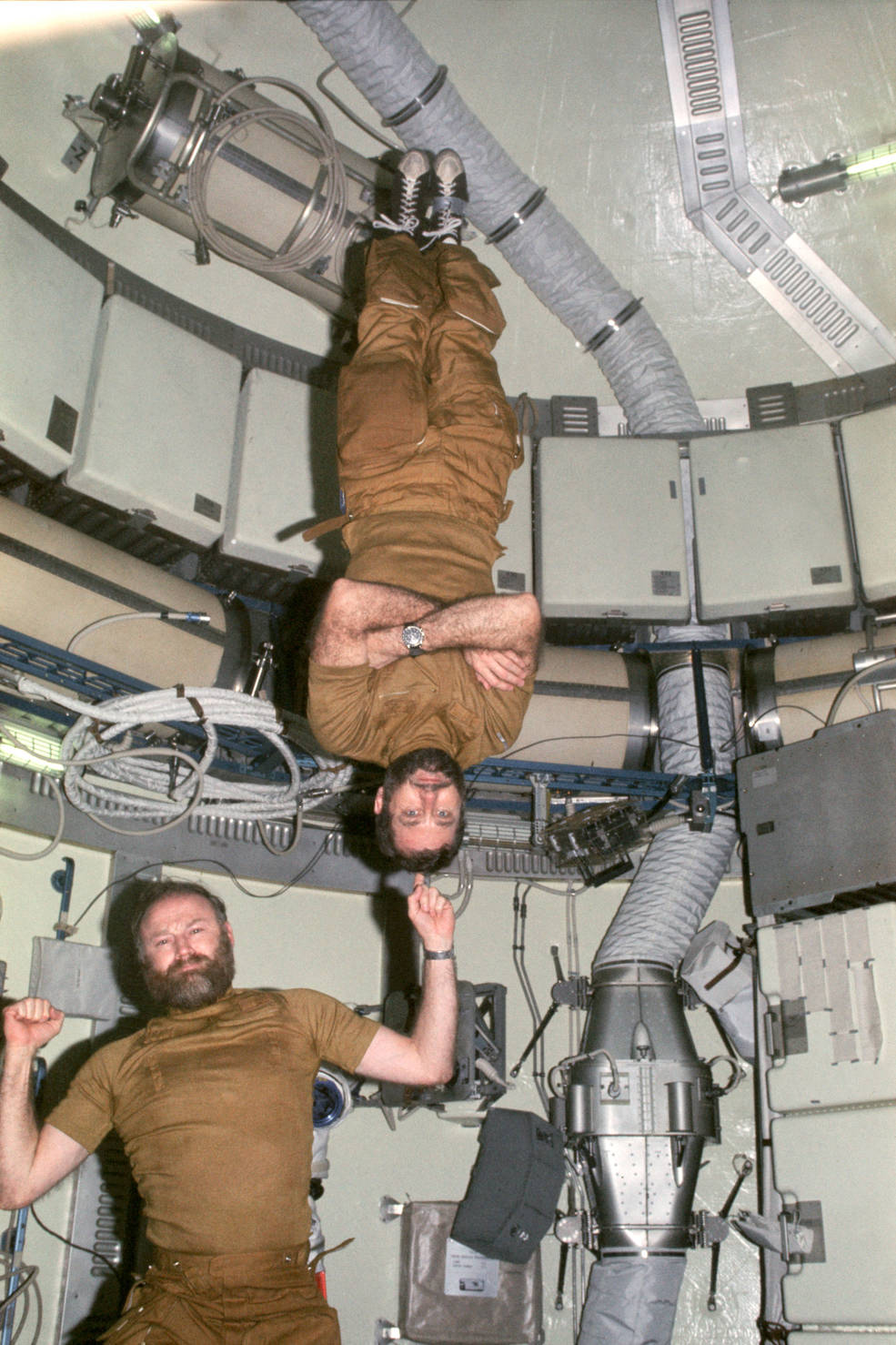
Left: Skylab 1, America’s first space station. Middle left: Skylab 2 astronaut Paul J. Weitz, left, assists Joseph P. Kerwin with a medical experiment aboard Skylab. Middle right: Skylab 3 astronaut Alan L. Bean tests an astronaut maneuvering unit inside Skylab. Right: Skylab 4 astronauts Gerald P. Carr, left, and William R. Pogue demonstrate weightlessness inside Skylab.
America launched its first space station, Skylab 1, on May 14, 1973. The 169,000-pound Skylab included a pressurized workshop, an airlock, and a suite of telescopes, with an overall habitable volume of 12,417 cubic feet. During the liftoff, Skylab suffered significant damage that threatened the entire program. The first crew to occupy the station, Charles “Pete” Conrad, Joseph P. Kerwin, and Paul J. Weitz, not only repaired the station but conducted valuable research during a record-setting 28-day mission. The second crew of Alan L. Bean, Owen K. Garriott, and Jack R. Lousma conducted further repairs, carried out more science, and set a new endurance record of 59 days. Gerald P. Carr, Edward G. Gibson, and William R. Pogue, the third and final crew to occupy Skylab, spent a record 84 days aboard the station and completed an unprecedented amount of research. The program provided valuable lessons about long-duration spaceflight in addition to the treasure trove of scientific results. Inhabited for a total of 171 days, after the departure of the third crew, Skylab 1 remained unoccupied until it reentered the Earth’s atmosphere in July 1979.
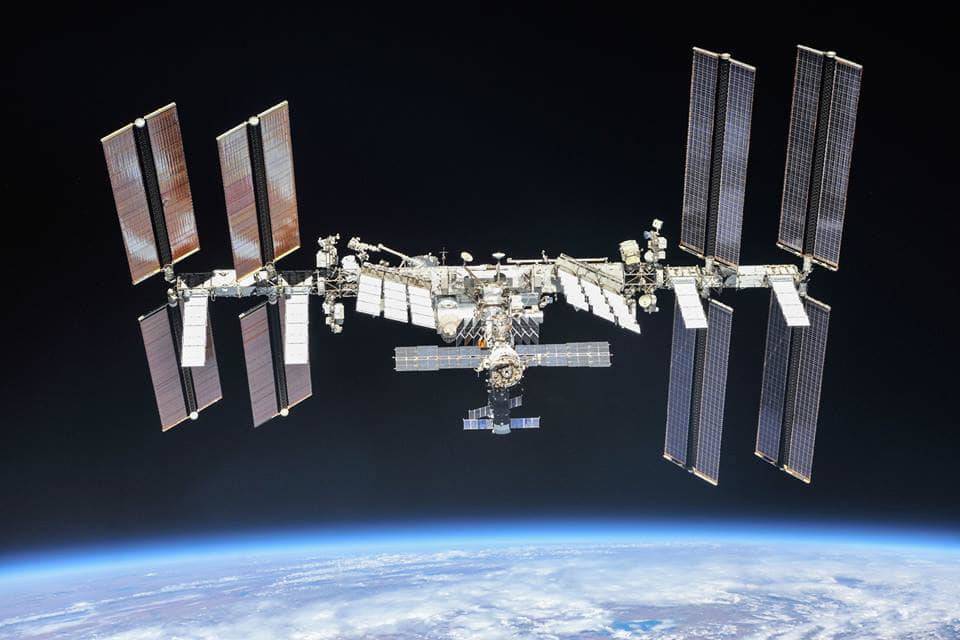
The International Space Station
In 1984, President Ronald W. Reagan directed NASA to develop and build a permanent Earth orbiting space station and called for international participation in the project. After several redesigns, in 1993 the partnership of the United States, Canada, Japan, and the European Space Agency invited Russia to join the ISS Program. As noted above, one of Russia’s significant contributions to the ISS, the Zvezda Service Module, enabled permanent human occupancy of the facility to begin in November 2000.
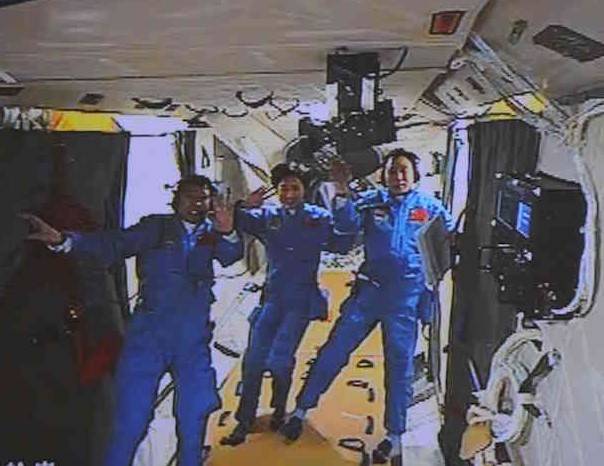


Left: Taikonauts Liu Wang, left, Liu Yang, and Jing Haipeng aboard the Chinese Tiangong 1 space station in 2012. Credit: Image courtesy of spaceflightnow.com. Middle: The Chinese Tiangong 2 space station, at bottom, docked with the Shenzhou 11 crew transport vehicle in 2016. Credit: Image courtesy of China Space Report. Right: The Chinese Tianhe space station core module undergoing preflight testing in preparation for its launch in 2021. Credit: Image courtesy of CMSA.
As an additional note, the People’s Republic of China’s Tiangong 1 and Tiangong 2 space stations, launched in 2011 and 2016, respectively, and the Tianhe core module of China’s space station, planned for launch in 2021, all trace their heritage back to Salyut.
To be continued…
John Uri
NASA Johnson Space Center













